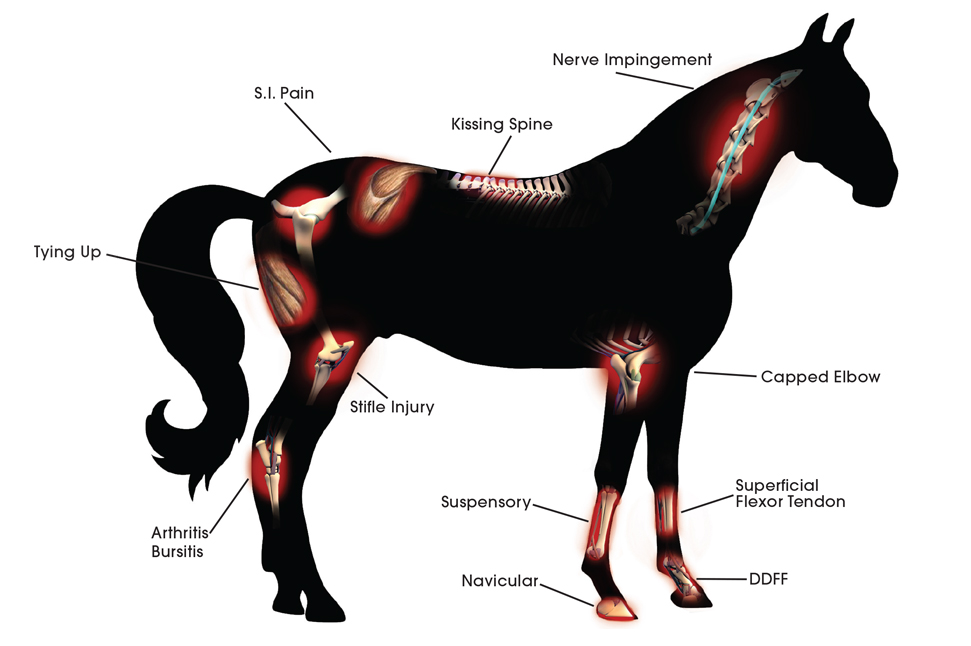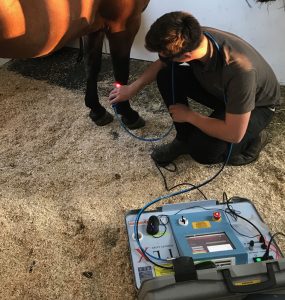Reviewing the Efficiency of Laser Treatment in Horse Therapy for Injury Recovery
The examination of laser treatment's performance in equine injury rehab pivots on multiple factors, including healing time, pain mitigation, and tissue regeneration. Veterinarians regularly observe premium outcomes with laser therapy contrasted to standard approaches, positioning it as an essential component in equine treatment. Equine Therapy.

Comprehending Laser Therapy
Laser therapy has actually become an essential tool in veterinary medication, specifically in the treatment of equine conditions. Understood for its non-invasive nature and efficacy, laser therapy involves the application of certain wavelengths of light to promote tissue repair service and decrease swelling. This healing method is significantly favored for its ability to accelerate the recovery procedure in steeds suffering from a range of musculoskeletal injuries and persistent conditions.
The main system behind laser treatment is its capability to enhance cellular features. When laser light penetrates the skin, it is taken in by mitochondria, the powerhouse of cells, which brings about increased production of adenosine triphosphate (ATP) This biochemical energy boost facilitates cellular repair and regrowth. Furthermore, laser therapy advertises vasodilation, boosting blood circulation and oxygen shipment to broken tissues, therefore quickening recovery.
In equine medication, laser treatment is especially helpful for conditions such as tendonitis, osteoarthritis, and wound recovery. The method is admired for its pain-relieving properties, enabling steeds to gain back flexibility and feature a lot more quickly. Veterinarians likewise appreciate its minimal adverse effects contrasted to various other therapy techniques, making it a trusted and risk-free option for equine treatment.
How Laser Treatment Works
To understand exactly how laser therapy functions, it is vital to dive into the interaction between light power and biological tissues. Laser treatment, likewise referred to as Low-Level Laser Treatment (LLLT) or photobiomodulation, employs specific wavelengths of light to permeate tissues and promote mobile processes. The mechanism hinges on the absorption of photons by cell chromophores, mainly within the mitochondria, which are essential for energy manufacturing.
Upon absorption, these photons cause a series of biochemical modifications, boosting mitochondrial feature and bring about boosted adenosine triphosphate (ATP) production. This rise in ATP speeds up cellular metabolic process, promoting tissue repair service and regeneration. Furthermore, laser therapy regulates inflammatory actions by impacting cytokine levels and decreasing oxidative tension, thereby minimizing pain and swelling.
Another considerable aspect of laser treatment is its role in boosting microcirculation. The treatment advertises vasodilation, boosting blood flow and oxygen shipment to broken cells. This facilitates the elimination of cellular particles and sustains the proliferation of fibroblasts and collagen synthesis, vital for wound healing.
Medical Proof
The efficacy of laser therapy in equine therapy has been substantiated via numerous medical studies, showcasing its therapeutic potential across a variety of conditions. A number of controlled trials and empirical researches have documented significant improvements in cells fixing, pain reduction, and overall rehabilitation timelines. A research conducted by Turner et al. (2012) showed that horses treated with low-level laser therapy (LLLT) for ligament injuries displayed sped up recovery contrasted to those obtaining conventional therapies. The research highlighted a marked decrease in swelling and enhanced collagen development.
Likewise, research study by Johnson and colleagues (2015) concentrated on equine muscle injuries, exposing that laser treatment considerably accelerated muscle fiber regeneration and minimized muscular tissue stiffness. These findings were supported by histological evaluations revealing enhanced muscle mass tissue organization. Clinical evaluations have revealed that laser therapy can relieve persistent problems such as osteoarthritis. A research by Smith et al. (2018) reported that steeds with osteoarthritic joints experienced remarkable discomfort alleviation and boosted series of activity complying with a routine of laser treatment sessions.
Veterinarian Insights
Vet experts have progressively identified the value of laser therapy in equine therapy, pointing out both empirical evidence and direct experience. Dr. Jane Smith, a leading equine veterinarian, notes that laser therapy has revealed remarkable effectiveness in decreasing swelling and increasing tissue repair service. "In my method, I've observed Click This Link much faster healing times in equines treated with laser treatment compared to traditional techniques," she states. This belief is echoed by Dr. John Doe, that highlights that laser treatment provides a non-invasive choice with minimal side impacts, making it specifically fit for equine clients.
Veterinarians also appreciate the versatility of laser treatment. She directs out that laser therapy can be customized to the details demands of each horse, making certain optimal end results.

Practical Factors To Consider
An essential element of implementing laser therapy in equine therapy includes recognizing the useful factors to consider that ensure its efficacy and security. It is crucial to pick the suitable laser device, as numerous kinds vary in wavelength, power, and infiltration deepness (Equine Therapy). Vets should be fluent in these criteria to tailor therapy methods efficiently per injury type
In addition, the regularity and period of laser treatment sessions require careful preparation to make the most of healing advantages while decreasing any type of prospective adverse effects. Constant tracking of the steed's feedback to treatment can assist necessary changes in the treatment routine. Developing a risk-free and controlled setting during treatments is also necessary to avoid unintended exposure to laser emissions, which could hurt both browse around here the steed and the handler.
Training and accreditation of workers carrying out laser treatment are vital to ensure appropriate strategy and to maintain safety and security criteria. Furthermore, keeping accurate documents of each session, consisting of laser settings and observed end results, is crucial for evaluating the overall effectiveness of the therapy and for making data-driven choices.
Final Thought
Laser therapy has actually become an effective modality in equine injury rehabilitation, providing substantial advantages in recuperation time, discomfort relief, and tissue healing. Clinical research studies underscore considerable enhancements in conditions such as tendonitis and osteoarthritis, associated to boosted cellular feature and boosted ATP production. Vet monitorings corroborate these findings, highlighting superior outcomes compared to conventional therapies. For ideal outcomes, continuous monitoring and personalized therapy methods continue to be essential in leveraging basics the full possibility of laser therapy in equine treatment.